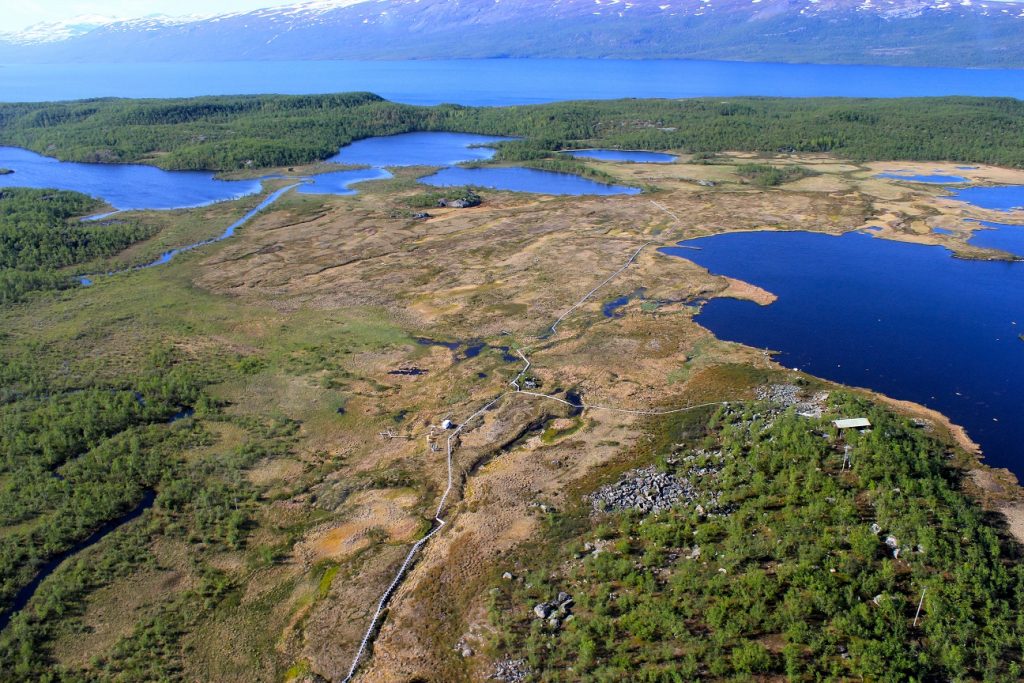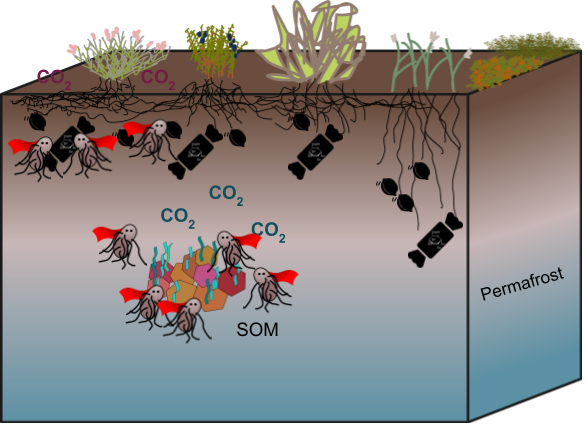Permafrost Microbiomes
How does thawing permafrost structure microbial communities?
Our climate is changing rapidly, leading to thawing of the permafrost in northern latitudes. Microbes play important roles in northern soils contributing to carbon storage and release. Understanding the underlying mechanisms that govern whether a permafrost-affected ecosystem will store or release carbon over the long term is critical to our planet’s future as the climate warms.
When permafrost thaws, microbial communities undergo major structural shifts. Some of these shifts are goverend by the physics, chemistry, and biology of the ecosystem. Other shifts depend on stochastic ecological processes (such as demographics, ecological drift, and dispersal). This makes predicting the outcomes of that thaw on global carbon cycles challenging. I am involved in several projects that aim to understand the effect of this thaw on microbial communities and to develop models to better predict the outcomes for microbial communities and landscape-level carbon cycles in northern ecoystems.
Stable States in an Unstable Landscape: Microbial Resilience at Stordalen Mire
Stordalen Mire, Abisko Sweden (68° 21’ N, 19° 20’ E) is a discontinuous permafrost peatland in Swedish Lapland. The site is a model ecosystem and has been studied in one form or another for over a century.

As permafrost thaws, habitats, biochemsitry, and microbial communities change, leading to increasing release of methane and carbon dioxide. The Mire is experiencing rapid thaw - fens have doubled over the last 50 years and researchers frequenly observe habitat conversion. Yet, over the last ten years, microbial communities within each habitat have remained remarkably stable, despite warming ground temperatures and active layer deepening. This project uses hand-currated microbial metabolic ‘omics data, community assembly modeling, and network analyses to understand the underpinnings of this microbial resilience to change.

Towards a systems perspective of arctic priming
Following permafrost thaw, plant productivity, microbial communities, and soil minerals interact in complex ways. The outcomes of these interactions determine whether more carbon is released to the atmosphere or stored belowground. One way that carbon is released rather than stored in thawing arctic soils is priming. Priming occurs when plants introduce new organic material to a soil, stimulating decomposition of previously stored soil carbon. Priming is an emergent property of the complex tripartite interaction of plants, microbes, and minerals yet it is rarely studied through all three lenses at once.

We are exploring how microbial carbon-processing traits are linked to growth rates in microbial communities associated with priming during permafrost thaw.